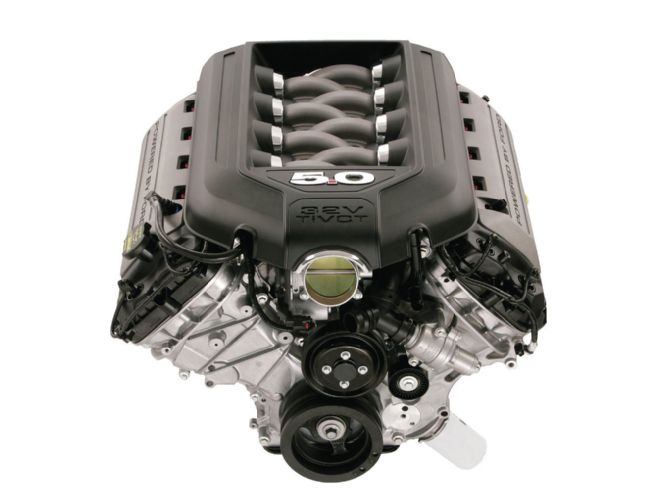
Over the years Ford has produced a number of noteworthy engines, but their latest offering just may be the best yet. Most often referred to as the Coyote, Ford's official designation is the 5.0L Ti-VCT (Twin Independent Variable Camshaft Timing). Regardless of what you call it, this all-aluminum powerplant is light, powerful, and efficient and is finding its way under the hood of an increasing number of street rods. Thanks to Ford Racing and Performance Parts (FRPP) there are several versions of the Coyote engines in crate form available to street rodders. They range from the 412hp version that was introduced in the Mustang GT to the supercharged 500-plus horsepower engine found in the Shelby GT 500.
While the FRPP crate motor program makes engines readily available, dropping a Coyote in an early car requires more than hooking up a few wires and a fuel line. However, thanks again to FRPP, the complex needs of the Coyote are easily met with control pack M-6017-A504V. This kit includes a PCM with Ford Racing's unique calibration, electronic throttle pedal, wiring harness with an OBD-II diagnostic port, power distribution module, air box, inlet tube, MAF sensor, and HEGO (oxygen) sensors. It should be noted that this PCM will not work with the original returnless fuel system. (A simple method to convert to a return-style system is to use a fuel pressure regulator with a return port.)
The PCM in the FRPP kit is listed for manual transmission applications and that has led to some confusion. It does not mean that automatic transmissions can't be used—it simply means the computer will not support an electronically controlled transmission. If an automatic transmission is used this PCM will still operate the engine, however an electronically controlled transmission will require an additional, stand-alone computer.
Transmission Options
There are a variety of transmission choices for the Coyote. When it comes to manuals strength is a concern, which means a T-5 from a small-block isn't a good choice. On the other hand, TREMEC five- and six-speeds are up to the task and will bolt to the Coyote with the appropriate bellhousing. It should be noted that while flywheels and flexplates are the zero-balance, eight-bolt style found on the modular, the Coyote crankshaft sticks out of the block 0.167-inch further. Fortunately there is enough "wiggle room" with the input shaft/clutch package of manual transmissions and the torque converter of automatics that it is not an issue. However, be aware, the starter reference plate that goes between the engine and transmission helps provide adequate clearance (as well as properly locating the starter) and must be in place.
For those who want to go with an automatic transmission there are a number of choices. One option would be a Ford 6R60/6R80 six-speed but they are hard to find, expensive, and the aftermarket hasn't had a chance to address some of the issues that may cause problems in performance applications. For our application we chose a Ford four-speed overdrive 4R75W from Gearstar.
Gearstar has devoted years to finding the weaknesses in the popular automatic transmissions and then set about developing the parts to correct them. These improved components increase the transmission's capacity to handle more horsepower and improve longevity. In addition, when a transmission is ordered from Gearstar the customer is asked for information about the car, including engine displacement, horsepower, torque, weight, rear gear ratio, tire size, type of speedometer drive and the intended use of the vehicle. All these specs are then used to calibrate the transmission's shift feel for that application. All transmissions are custom built by one of five master techs from start to finish and then dyno tested with the converter for the equivalent of 100 miles to ensure that the entire package is in perfect operating condition before it is shipped to the customer.
Our Level III transmission is good for 500-plus horsepower and 450 lb-ft of torque. It is equipped with a long list of improved parts, including Alto Hardened Kolene Steels, Raybestos Stage I Frictions, and Transgo Reprogramming shift kit with Shift CommandFilter; electronics include an updated EPC, new shift solenoids, lock-up solenoid, internal wiring harness, output sensors;complete Torrington bearing kit, new bushing kit, new reverse band, alto red eagle wide OD band, 300mm, hardened input shaft; high-capacity four-plate intermediate clutch, direct clutch pack with eight frictions, reverse drum with heavy-duty mechanical diode, updated sun shell and gear, new low spring and roller, high-capacity pump assembly, expanded capacity overdrive servo, updated OD servo pin, updated Third gear accumulator piston, extra capacity aluminum pan, transmission mount,custom 360-degree adjustable shift linkage arm, and a 30,000 gvw cooler. All that and it came in a crate delivered to our door.
While computer controls have improved the performance and efficiency of modern automatic transmissions, without a transmission control unit (TCU) they're a better doorstop than a gearbox. But for every problem there is a solution and in this case it comes from the appropriately named Powertrain Control Solutions (PCS).
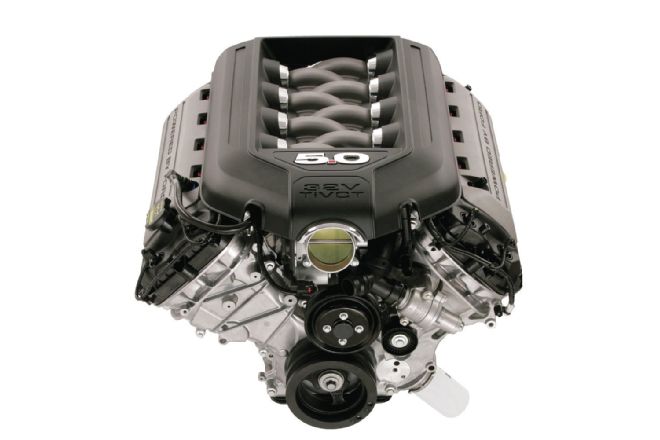
1. Officially designated by Ford as the 5.0L Ti-VCT (Twin Independent Variable Camshaft Timing) V-8, in rodding circles it’s the Coyote. Call it what you will, this new all-aluminum, 302-inch V-8, which cranks out 412 hp at 6,500 rpm and 390 lb-ft of torque at 4,250 rpm, is becoming more popular in crate form.
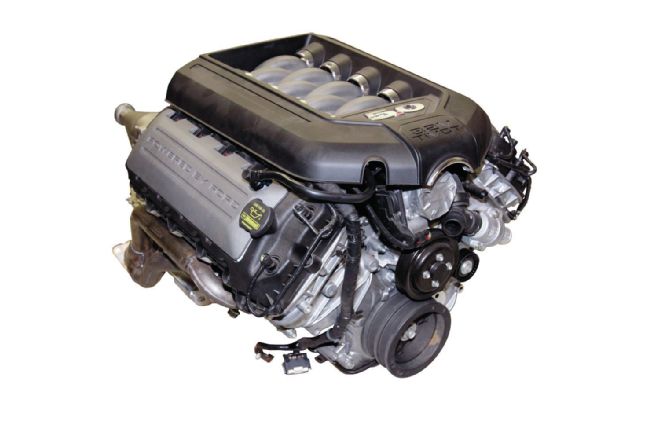
2. Given what you get, Coyote crate motors are a great buy. But once the box is open there are a few more things you’ll find operational, not the least of which is a transmission.
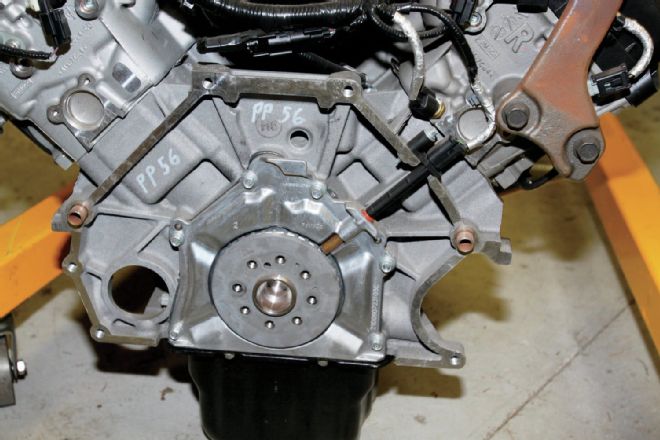
3. The eight-bolt crank flange is the same as modular motors so flexplates and flywheels are interchangeable. Basically anything that bolts to a modular motor will fit but keep in mind these engines are stout and will require a gearbox that can stand up to the power.
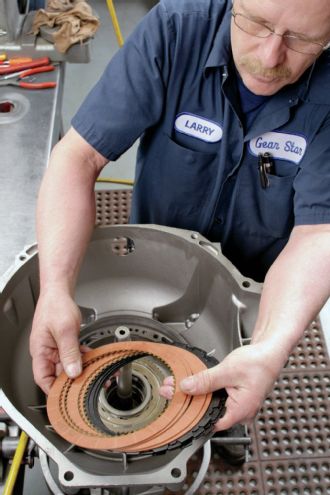
4. There are a variety of transmission choices, we went with a tried-and-true 4R75W from Gearstar. They come in several performance levels, have a reputation for being extremely reliable, and have an excellent gear spread.
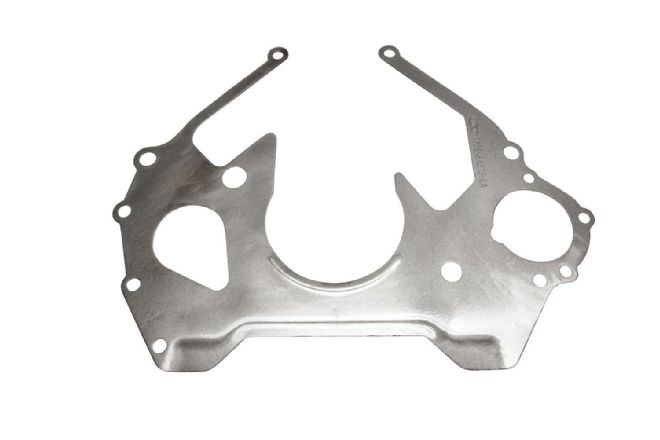
5. This piece, often referred to as a spacer or block plate, serves a special purpose and is correctly called a starter index plate as it precisely locates the starter. Automatic transmissions use PN M-6373-A, manuals use PN M-7007-A. The only real difference is the automatic plate provides access to the torque converter bolts.
As the crew at PCS explains it: "The primary factor separating the modern electronic automatic transmission from yesterday's hydro-mechanical automatic transmission is the speed and complexity of the logic used for transmission behavior. The hydro-mechanical automatic transmission of yesterday could only make its decisions based on throttle position, engine load, and driveshaft speed. Whereas the TCU can use these inputs as well as torque converter speed, engine speed, wheel speeds, traction control parameters, electronic throttle position, fluid temperature, engine temperature, brake pedal actuation, forward and lateral acceleration, as well as several other parameters. The TCU can also utilize manual shifting operation and provide altered transmission behavior for special conditions (road race, drag race, dynamometer, snow, towing)."
For those looking for a straightforward, easy-to-live-with transmission controller, PCS offers the Simple Shift. A laptop is not required to install the Simple Shift and it will completely control shift points, shift firmness, and torque converter lockup. Transmission shift points are adjusted by dials on the end of the control unit and diagnostic capabilities are communicated by flashing LEDs that also indicate what gear the transmission is in and whether or not the torque converter is locked. For those who want more adjustment options the Simple Shift tuner is also available. The handheld unit can remain connected to the Simple Shift or be removed when programming is complete. Also available from PCS is the TCM-2000. Similar to all their controllers, the TCM-2000 features dual calibrations that allow the driver to pick from two distinctly different transmission operating modes (sport mode, tow-haul mode, and so on) with programmable shift points, shift firmness, and torque converter lockup tailored to each application. A CAN interface (controller area network, which lets multiple computers to talk to one another) allows the TCM-2000 to be seamless, used with CAN-based vehicles or ECUs, and also simplifies the connection to a PCS Paddle Shifter or GSM-2100 Gear Select Module.
To put shifting at your fingertips, PCS offers the GSM Push Button Shifter that replaces the shift lever and linkage with a small touch-pad control module and sealed actuator. Thanks to its design the GSM control module can be surface or flush-mounted and is small enough to fit in consoles, dashes, door panels, or even armrests. Each button is recessed to avoid inadvertent touches and brightly backlit for darker environments. An easy-to-read display shows you what gear you're in. Standard control modules utilize a PRND configuration along with plus and minus buttons for shifting up or down.
Another unique shifting option is the PCS Paddle Shifter. Designed to provide the look and feel of an OEM system, it will bring out the Ferrari Formula 1 driver in anyone, it's that cool. Easily installing behind any aftermarket 5-, 6-, or 9-bolt steering wheel, the paddle shifter communicates with the transmission control unit via a wireless receiver module that plugs into the PCS transmission control unit's wiring harness.
As if the paddle shifters aren't cool enough, the optional display allows the driver to view an array of data, including current gear, vehicle speed, coolant temperature, converter lockup, engine rpm, turbine rpm, transmission slip, manifold pressure, transmission temp, line pressure, and driveshaft rpm.
Installation of the Simple Shift is uncomplicated. Mount the unit, hook up the wires, and you're ready to go. The output from the TCU plugs into the factory socket on the transmission, the remaining wires are for signals to the TCU—some aren't used while others are, depending on the application.
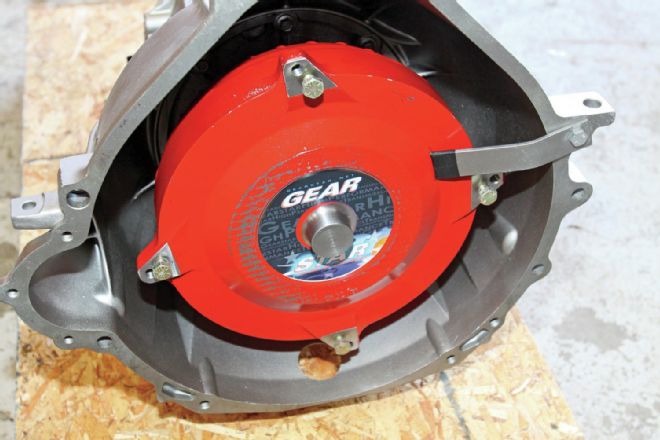
6. One way to have the best of both the performance and economy worlds is a Gearstar lockup converter with slightly increased stall speed. Note the dual bolt pattern.
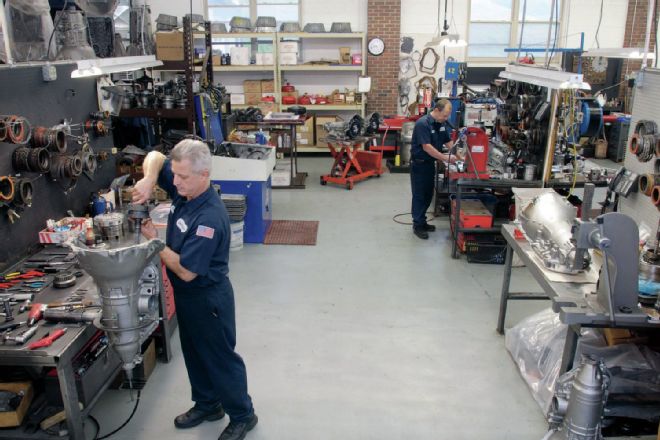
7. All Gearstar transmissions are built in this spotless facility by one technician from start to finish. The individual who puts the transmission together answers any tech questions.
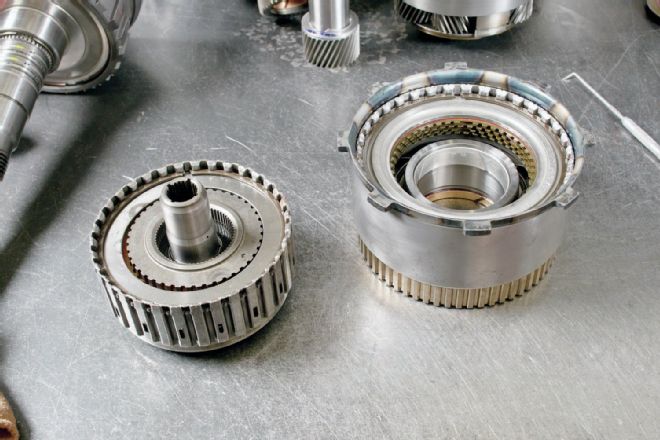
8. From years of experience the team at Gearstar has developed parts to improve OEM transmissions. Here is a direct drum on the left and a reverse drum on the right, both are equipped with improved clutch components for increased torque capacity and longevity.
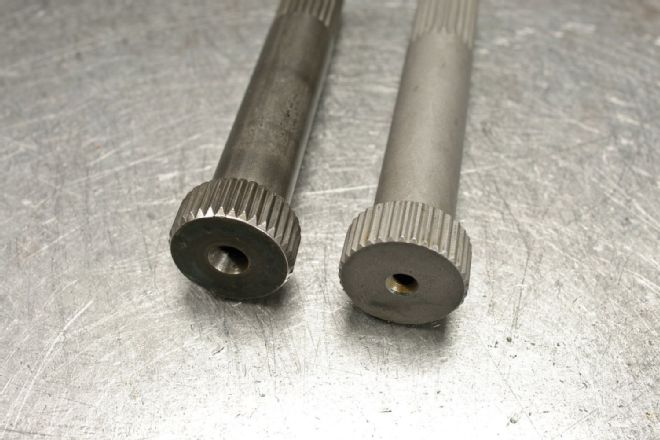
9. Gearstar has found and improved weak spots in every transmission they offer. Here is a hardened 4R70W main shaft on the left compared to a stock shaft on the right. Again, the goal is increased torque capacity and reliability.
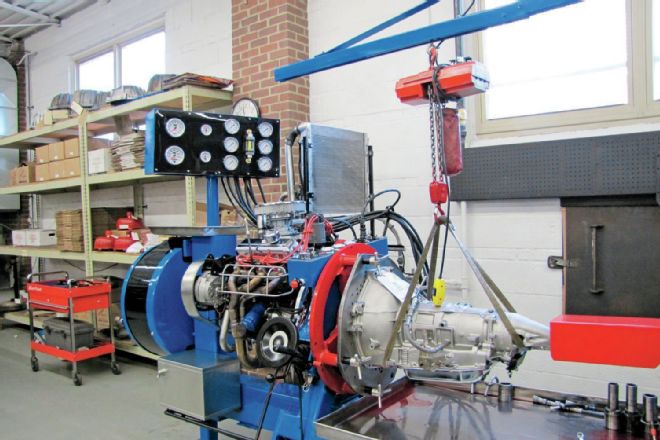
10. Before they are shipped, each Gearstar transmission is thoroughly tested on the in-house dyno. Transmissions are shipped with fluid, the proper dipstick, and a cooler.

11. The clutch frictions and steels in any automatic transmission are critical. For performance applications, improved materials, such as those shown here, are a must.
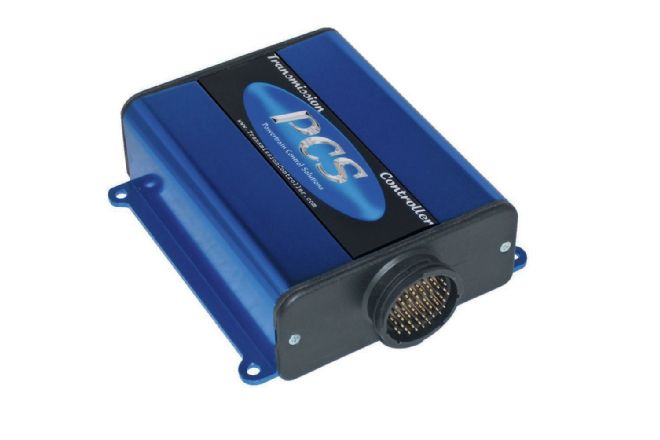
12. Also incorporated in all Gearstar transmissions are the latest factory updates available. Here is an early production roller clutch on the left compared to the later, improved version on the right.
TCM-2000
Installation of the TCM-2000 is similar to the Simple Shift, the TCU is mounted and the wiring harnesses are connected. Next, a PC is used to start the TCU software, it will auto-detect the presence of the transmission controller and the current operating parameters of the TCU will appear on the screen. At that point the transmission's functions can be tailored to its intended use. Detailed instructions on tuning the TCU will be found in the user's manual.
Coyote Installation Tips
Although the Coyote is light, it's not compact. Only slightly smaller than a Chrysler Hemi, the Coyote measures 26 inches long, 27 inches high, and 28 inches wide.
In most cases the oil filter will interfere with the steering and the factory headers or cast-iron manifolds may be problematic. The good news is the aftermarket is responding and tight-tuck headers are available from a number of sources.
Another issue with the Coyote is mounting engine-driven accessories. Ford used electric/hydraulic power steering and as a result there isn't a provision for a belt-driven pump and the stock alternator location will often interfere with steering shafts and in some cases framerails. There are several front-drive systems available, however most leave the alternator in the stock position.
Installing a Coyote in an early car has its share of challenges, but then the results will certainly be worth the effort. Besides, if it were too easy, everyone would do it.
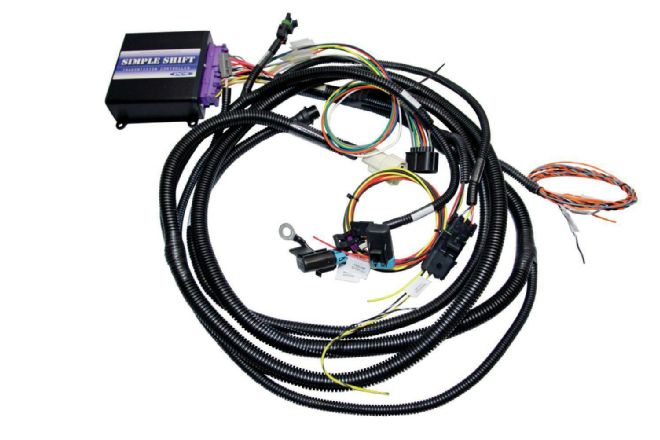
13. The FRPP computer retains all the factory engine functions, including variable cam timing, however it won’t run an electronic transmission. As a result these computers are said to be for manual transmission applications.
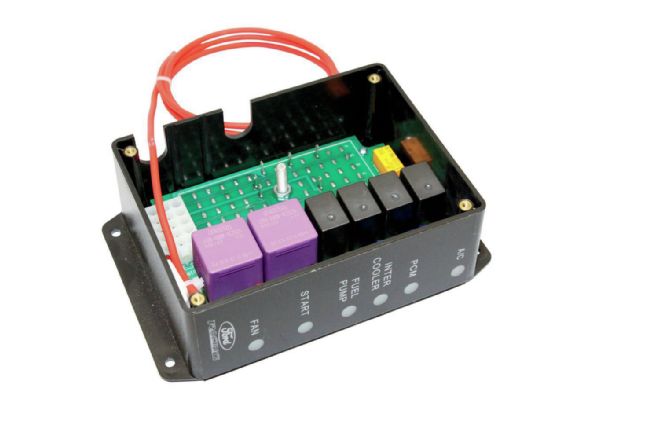
14. Included in the control pack package is this power distribution module. It runs the cooling fan, fuel pump, A/C, and in some applications an intercooler pump and push-button starting.
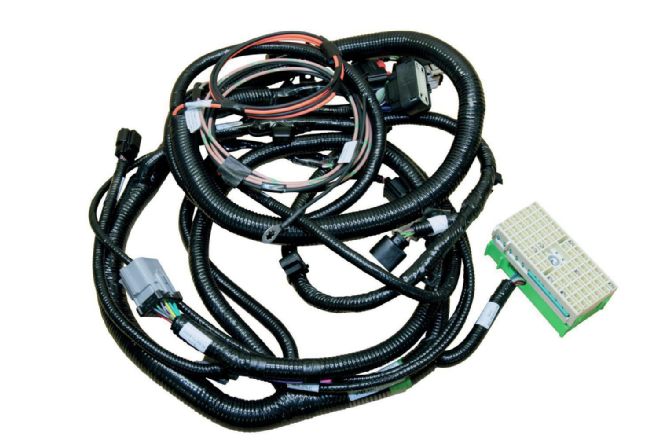
15. It may look like a bundle of snakes, but FRPP’s wiring harness is plug-and-play.
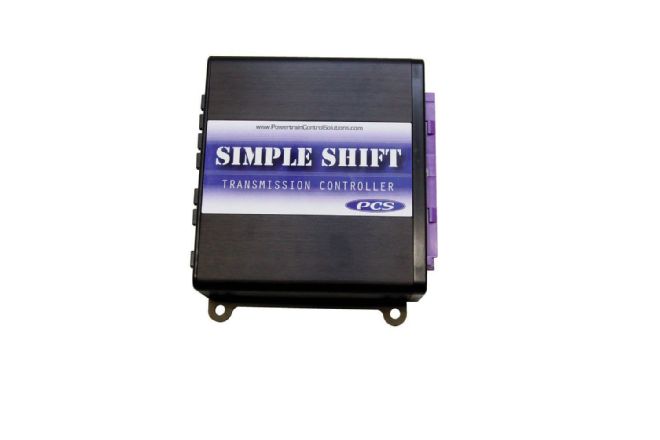
16. The solution to using an electronically controlled transmission with a Coyote (or any other engine) is with a controller from Powertrain Control Solutions. This is the Simple Shift version.

17. While this bundle of wires may be intimidating, the factory-style plugs and clearly marked wires make installation of the PCS controller quick and easy.
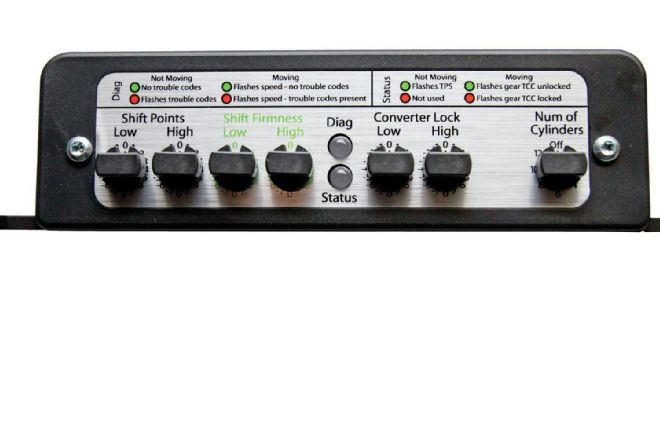
18. The Simple Shift allows transmission shift points and firmness to be adjusted by dials on the end of the control unit. Diagnostic capabilities are communicated by flashing LEDs that also indicate what gear the transmission is in, and whether or not the torque converter is locked.
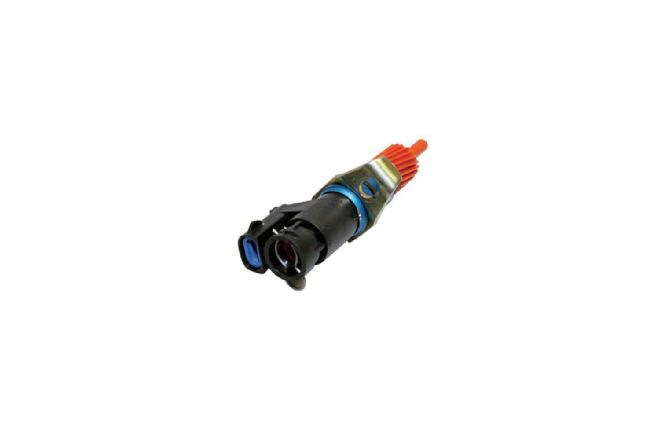
19. This is the Output Shaft Speed Sensor (Vehicle Speed Sensor, or VSS) it plugs into the hole in the transmission’s tailshaft housing.
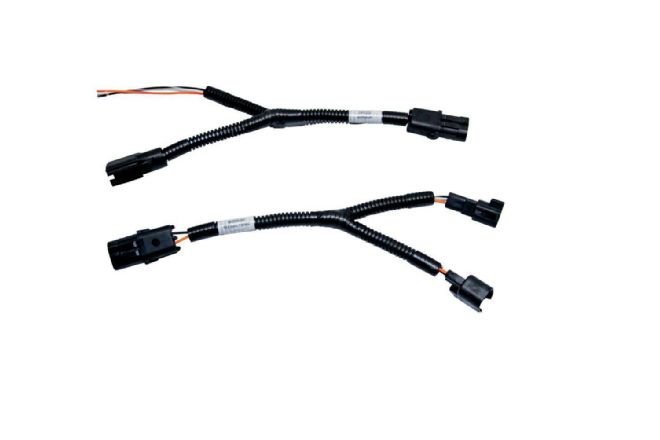
20. For transmission with an Output Shaft Speed Sensor, PCS has added a “Y” to the wiring harness, which allows the Simple Shift harness to plug directly into the transmission and still leave an access plug for aftermarket speedometers or factory connectors of some kind that need a VSS signal.

21. Also available from PCS is the TCM-2000. It provides two distinctly different transmission operating modes (sport mode, tow-haul mode, and so on).
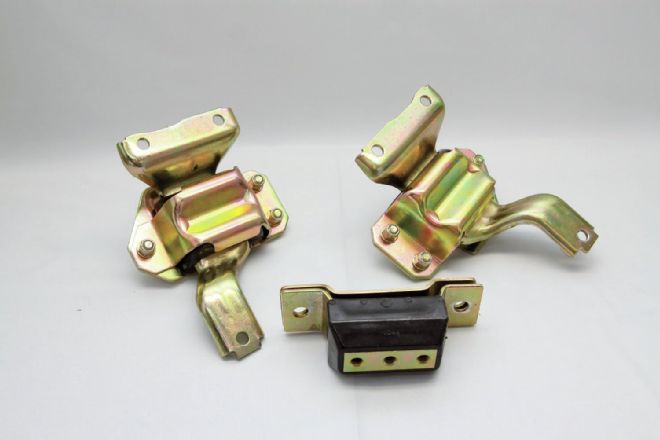
22. A better choice for Coyote engine swaps is Energy Suspension’s engine and transmission mount kit 4.1130 intended for 4.6L Mustangs.
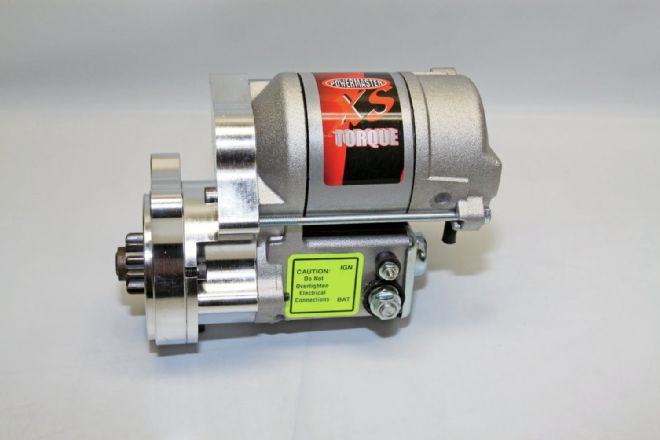
23. Powermaster offers their PN 9532 XS Torque gear reduction starter for Ford 4.6 mod motors—it also fits the Coyote.
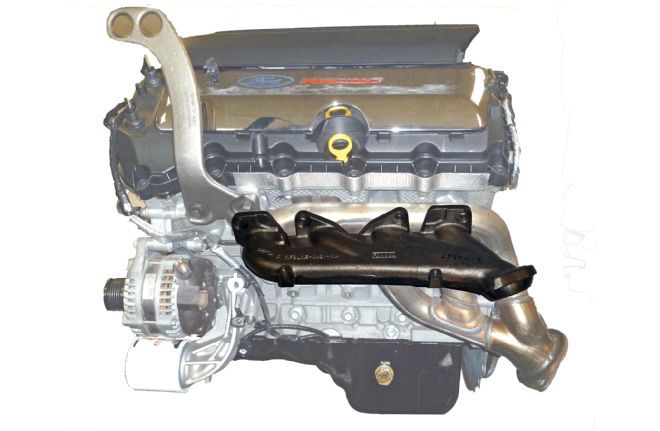
24. A unique feature of the Powermaster starter is the detachable mount—it allows the starter to be rotated for increased clearance.
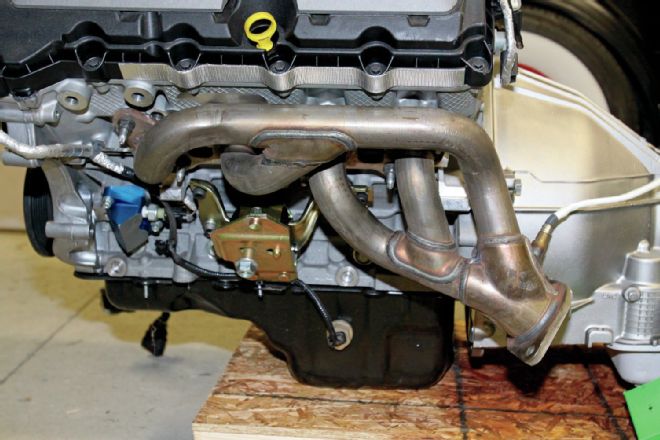
25. Ford’s headers tuck in fairly close to the block, but are quite wide at the outlets, which may interfere with many early chassis.
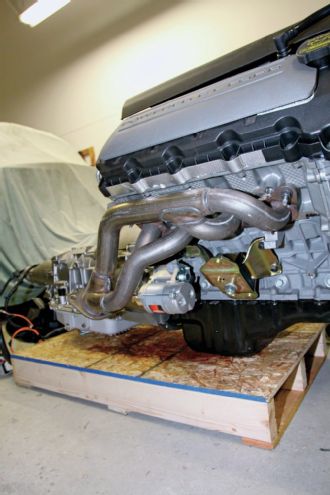
26. On the right side the story is pretty much the same, the outlets are in a bad position for many early cars. However starter clearance is more than adequate.
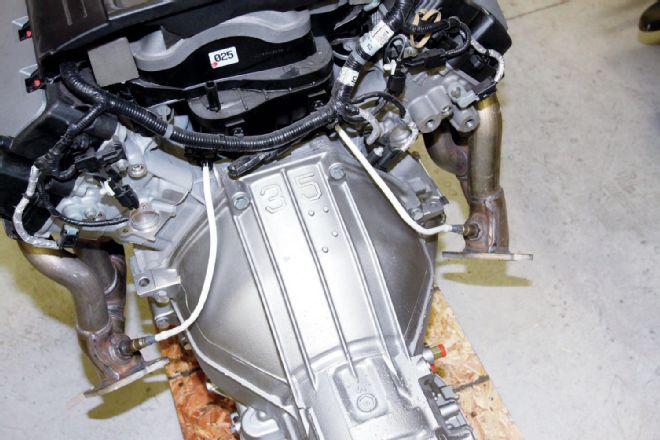
27. One of the advantages of the Ford headers is the proper placement of the dual oxygen sensors.

28. Another Coyote exhaust option from FRPP: cast-iron truck manifolds.
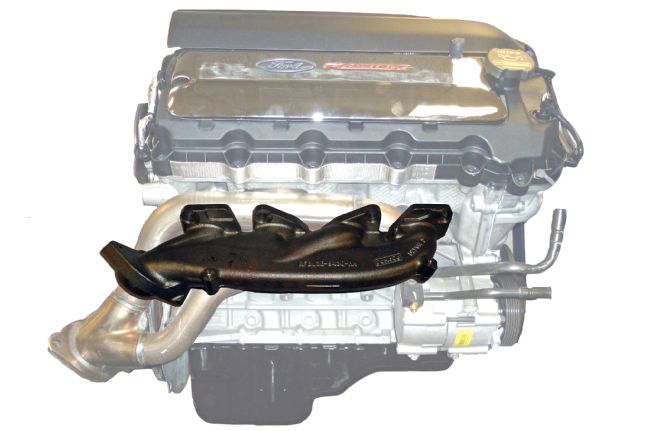
29. The eight-bolt crank flange is the same as modular motors so flexplates and flywheels are interchangeable. Basically anything that bolts to a modular motor will fit but keep in mind these engines are stout and will require a gearbox that can stand up to the power.